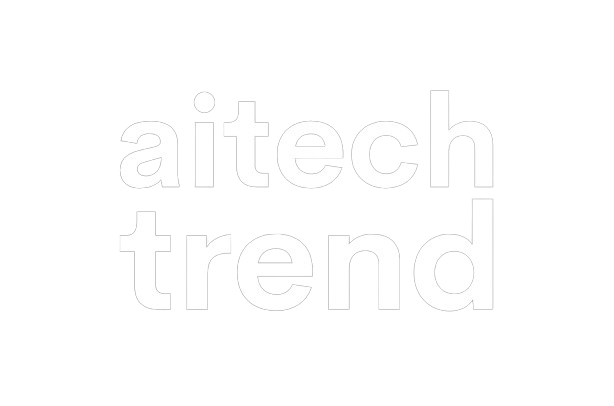Introduction to Cryptocurrency
Blockchain is the technology that enables the existence of cryptocurrencies, along with other emerging applications. A blockchain is a decentralized ledger of all transactions across a Peer-to-Peer (P2P) network, and by utilizing this technology, participants can confirm transactions without having a central clearing authority involved to provide mediation and trust in the transaction. This technology is shifting the current financial system into a new paradigm of distribution control. Potential applications of blockchain technology include fund transfers, settling trades, voting, immutable recordkeeping, and many more solutions to the current financial system’s problems.
Bitcoin is probably the most recognized cryptocurrency, though there is a treasure trove of others that exist today. According to PwC is much like other currency but with its own encryption mechanism.
There are many sides of the coin, regarding this innovative concept of cryptocurrency. Recently, there has been an uptick in whole-hearted attempts at defining the many facets of cryptocurrency based on a use case by the US Congress. Some of which include definitions of stablecoins, central bank digital currencies (CBDCs), digital asset securities, and digital assets.
Stablecoins, CBDCs, & Legal Tender
Various types of cryptocurrencies exist that are mechanically designed to solve certain use cases. A Stablecoin is a type of cryptocurrency that keeps stable market value against a specific index or asset, as the U.S. dollar or gold.
A Stablecoin is desirable for at least three reasons:
- It can be utilized within blockchain systems to settle payments. For example, lawyers or accountants can exchange stablecoins generated by smart contracts automatically for the services they provide within the system, without being bothered by the exchange fees from a cryptocurrency to the U.S. dollar, which can range from 0.7% to 5%.
- It can be used to form crypto money market accounts, for asset allocation for hundreds of cryptocurrencies.
- It can be used by miners or other people who provide essential services to maintain blockchain systems to store values, as it may be difficult and expensive for them to convert mined coins into traditional currencies.
As Randal Quarles, Vice Chairman for Supervision at the United States Federal Reserve noted, “We do not need to fear stablecoins.”
The recent answer to the private sector’s innovation of stablecoins is the public sector’s CBDC. A Central Bank Digital Currency or CBDC is defined as the money issued by the central bank in electronic format and universally accessible, which allows for all agents in the economy to use it to purchase goods and services. The Fed is researching CBDCs and published a report about the topic in May 2021. The United States is not the only country looking at adopting CBDCs. According to the Atlantic Council, 83 countries are exploring the benefits of CBDCs. Bahamas Sand dollar project a digital currency of Bahamians dollar launched with Support of AFI. China also announced research of CBDC in 2020
China wants a globally accepted digital currency using the Yuan-based CBDC. While Venezuela recently forecasted its plans to adopt a CBDC by October to combat its recent rise of radically increasing inflation and deterioration of its currency’s purchasing power. Specifically, the nation is looking at erasing six zeros from the bolivar.
Taking the concept of stablecoins and CBDCs a step further, some countries are exploring the public-private hybrid application of allowing privately created cryptos to be used as legal public tender. El Salvador became the first country in the world to officially classify Bitcoin as a legal currency this year. A few South American countries are looking at following in El Savador’s footsteps, but recently there has emerged an influential organization that has been quite vocal against El Salvador’s legalization of Bitcoin as legal tender and that is the International Monetary Fund (IMF).
According to IMF cryptocurrency has several drawbacks with it’s advantages of cheaper financial services. El Savador has run into further obstacles beyond the IMF preaching against its monetary policies, as the World Bank has decided not to support the country.
Digital Asset Securities & Digital Assets
Other use cases beyond the currency application of crypto can be defined under the umbrella term Decentralized Finance or Defi with digital asset securities and digital assets.
58th page of Digital Asset Market Structure and Investor Protection Act Don Beyer’s (D-Va.) introduced to the U.S. Congress recently, seeks to create an exhaustive regulatory regime for digital assets.
Initial Coin Offerings (ICOs) or Security Token Offerings (STOs) fall under the classification of cryptos that are considered securities. These types of cryptocurrencies utilize digital asset security tokens as a fundraising mechanism to gain investment capital to support a startup or project. These sorts of tokens are viewed as “investment contracts” per the United States Securities Exchange Commission (SEC) and therefore do not pass the Howey Test and are subject to registration with the SEC. The practical application of representing equity ownership in a real estate investment contract is another example of what could be classified as digital asset security.
Another classification that certain cryptocurrencies are being defined as are digital assets, which designates crypto as a digitally represented commodity. Commodities are raw materials that are used as inputs in the production of other goods or services. Popular commodities that are traded include energy products like oil and natural gas, precious metals like gold and silver, as well as food and agricultural goods like coffee, wheat, cotton, and sugar. Commodity markets are generally regulated less stringently. While in contrast, securities are subject to rules on price transparency, greater reporting demands, as well as market abuse oversight. The security Market tends to be expensive so most industry executives labeled it as a commodity. Cryptocurrencies have also emerged as a store of value or tool for speculation, leading many to say it’s closer to a commodity. While today, Bitcoin is seen as digital gold, and a more suitable store of value.
The Fourth Industrial Revolution
As technology revolutionize the way we work and relate to one another. With this humans are going to view another shift that is not experienced before with full support from all parts of society. There are three reasons why today’s transformations represent the arrival of a Fourth Industrial Revolution (4IR): velocity, scope, and systems impact
When compared with previous industrial revolutions, the 4IR is evolving at an exponential pace. Moreover, it is disrupting almost every industry in every country around the world, and the breadth and depth of these changes herald the transformation of entire systems of production, management, and governance.
Blockchain is cited as a pillar of the 4IR, comparing it to technologies such as the steam engine and the internet that triggered previous industrial revolutions. It has the power to disrupt existing economic models and may prove particularly valuable in emerging market economies. Blockchain holds great promise as a method of fighting corruption, especially in Latin America and the Caribbean, where more smartphone penetration can facilitate the adoption of new technology. This 4IR can assist in accelerating progress towards development by helping prevent fraud and corruption. Yet the technology is in its early stages of development and serious challenges and risks, both technical and regulatory, are required to be addressed before it achieves widespread adoption.
Sustainable Development Goals & Consensus Mechanisms
At its heart are the 17 Sustainable Development Goals (SDGs), which are an urgent call for action by all countries – developed and developing – in a global partnership. Participants in this shared goal, recognize that ending poverty and other deprivations must go glove-in-glove with strategies that improve health and education, reduce inequality, and spur economic growth; all while tackling climate change and working to preserve our oceans and forests.
Proof-of-Work (PoW) is the original crypto consensus mechanism. The reason it’s called “proof of work” is because its network requires a huge amount of processing power to run. PoW blockchains are secured and verified by virtual miners around the world racing to be the first to solve a cryptographic puzzle. The winner of the race gets to update the blockchain with the latest verified transactions, and thus is rewarded by the network with a predetermined amount of crypto. As the value of the rewarded cryptocurrency grows, more miners are incentivized to join the network, increasing its power and security.
PoW provides networks with some excellent benefits as it is a proven, robust way of maintaining a secure decentralized blockchain. PoW also has some major downsides as a consensus mechanism, because of the amount of processing power involved – it becomes impractical for just any individual or group to get involved in the network’s reward system. This type of framework certainly makes for more of an exclusive rather than inclusive blockchain. Also, due to PoW’s energy-intensive process that can have trouble scaling to accommodate the vast number of transactions smart-contract compatible blockchains like Ethereum can generate. Therefore, alternatives have been developed with the more popular option called Proof-of-Stake (PoS).
The best-known alternative for the permission-less systems required for cryptocurrencies and other open Decentralized Applications (DApps) is the PoS consensus mechanism. Within this mechanism, the weight of a participant’s vote is not tied to the scarce resource of computing power, but the scarce resource of capital. This consensus mechanism determines who is allowed to build (“mint”, “forge”, “bake”) and attach the next block, usually by way of the amount of stake (via a deposited and locked node) or “buy-in” into the network. The deposit incentives the node to stick to the rule sets of the network, as any misbehavior detected will lead to the node losing this deposit.
The benefit of PoS is that it does not involve any computationally intensive steps, such as solving the cryptographic puzzles in PoW. Due to the low complexity, of PoS it’s highly energy efficient.
There are currently other consensus mechanisms in use today, and many more will be introduced worldwide. These mechanisms are specific to specific use cases, such as Proof-of-Participation (PoP) which is leveraged by the MXC cryptocurrency, which is powered by Low-Power-Wide-Area-Network, an ambitious global movement led by the MXC Foundation, creating a free, decentralized IoT network for everyone. Blockchains that are built and developed in alignment with the sustainable development goals will see the most benefit and highest chance of survival moving into the next decade
The Token Economy
Utility of use will separate the haves from have nots in crypto – maturing the asset class past the stage of speculative investments. Regulation plays a key role in drawing the lines in the sand of where private industry can play or not. Public-private partnerships are key in passing legislation that creates an even playing field.
The new world is set to embrace a token economy where value is represented by a token and is traded like the internet exchanges information today. So too will the new world adopt this information sharing interconnected network and apply the same general model with value sharing within an interconnected network.
Transfers of ownership of assets like fiat money, company shares, or usage rights between agents (individuals or organizations) are often mediated by trusted third parties (TTPs) such as banks. The involvement of TTPs often introduces drawbacks, like increased costs, longer processing time, and the presence of a single point of failure.
Technological advances have enabled the digital representation and management of asset ownerships using tokens on decentralized digital platforms without the need for TTPs.
A token is a sequence of characters that serves as an identifier for a specific asset, such as personalized usage rights, or as an asset type like a cryptocurrency. The ability to represent assets in form of digital tokens on a decentralized digital platform and to assign ownership of these assets to agents in a fraud-resistant way can help to reduce drawbacks related to TTPs (e.g., the presence of single points of failures) and enable a new type of economy: the token economy. In tackling drawbacks related to TTPs, the token economy holds a large transformative value that can strongly affect businesses by enabling novel business models and increasing transparency of business processes and our daily life by being able to monetize our own personal data instead of just giving it away.
Summary
Bitcoin was launched in response to a manipulated financial system, after the 2008 world financial crash. This Bitcoin project has birthed an experimental decentralized financial system with many cryptocurrencies that target to solve niche use case problems within the existing financial system. The world monetary system is seemingly broken, with the emergence of countries like Venezuela looking at adopting a CBDC to put a band-aid over its out-of-control inflationary monetary policies.
The explosion in monetary innovation is a collective system of the current day currency wars and perhaps a potential longing for a new, more stable financial system and perhaps for a one-world currency. Or perhaps the world will look to a basket of currencies in a Special Drawing Rights (SDR) model that looks to replace the relatively past due shift from the reign of the U.S. dollar as the world reserve currency.
Similar to the exponential explosion of email account adoption during the introduction of the internet of information, individuals and organizations are starting to adopt digital wallets during the introduction of the Internet-of-Value (IoV). It is clear to see the need for a new financial system at the macro level and this recent rise in digital wallets held by individuals and organizations demonstrates the desire of the masses to participate in a new paradigm.
According to Balaji S. Srinivasan, the world is shifting into a global ecosystem of Network States (NSs). An NS starts with a virtual university, bootstraps a digital economy, and can be forked to create new opt-in polities; these types of “cloud cities” allow members to collectively negotiate with existing jurisdictions and crowdfund territory in the real world. The internet of information and the IoV act as the main governance mechanism, which will prompt physical communities to adapt and become increasingly decentralized. Just as John Locke said that the legitimate state is that state that protects property rights, encryption, inherently blockchain, and cryptocurrencies form the basis of a new system of rights that undergirds the Network State. Overall, the rise of the NSs unlocks information and value to become decentralized with more inclusive access and redistribution of power across public and private sectors globally.
A more decentralized world would call for increased interoperability to ensure less friction and more consensus across diversified networks. The evolution and adoption of cryptocurrencies utilized as bearer instruments to bridge value between networks will be integral for the infrastructure of the new paradigm shift. Crypto projects that are building this bridge between central banks, commercial banks, businesses, and individuals are leading the charge in crafting a new world.
Technology is not an exogenous force over which we have no control. We are not constrained by a binary choice between ‘accept and live with it’ and ‘reject and live without it’. Instead, take dramatic technological change as an invitation to reflect on who we are and how we see the world
Per Klaus Schwab, Founder and Executive Chairman of the World Economic Forum
Cryptocurrencies are no different than any other technology, in that it serves as a tool and resource for humankind to craft society. Humans utilize tech under the model of manifestation according to the universal rule of as above, so below, as within, so without; what we create in this reality is a reflection of ourselves. Cryptocurrency will play a strong role in the development of society as a whole in its creation of the IoV, but ultimately the future of cryptocurrency will be determined by the destiny we desire to enact with our will.











